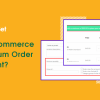Cross-Site Scripting (XSS) attacks are one of the most common vulnerabilities that WordPress sites face. An XSS attack involves injecting malicious code, typically JavaScript, into a trusted website, which then runs in the browser of unsuspecting visitors. If a WordPress site has an XSS vulnerability, attackers can use it to gain unauthorized access, steal data, or manipulate the site’s content, compromising both site security and user trust.
In this post, we’ll explore what XSS attacks are, how they impact WordPress sites, and what you can do to prevent them.
What is a Cross-Site Scripting (XSS) Attack?
An XSS attack happens when an attacker injects malicious code into a vulnerable web page, which is then served to users as if it were legitimate. This malicious code runs in the browser of any user who views the page, allowing attackers to potentially steal user data, hijack sessions, or even change website content without the owner’s knowledge.
XSS attacks typically exploit vulnerabilities in user input fields on a site, such as comments, forms, or search bars, where the website does not properly sanitize or validate inputs.
Types of XSS Attacks
There are three main types of XSS attacks:
- Stored XSS: Malicious code is stored on the server and runs whenever a user visits the affected page. For example, a hacker could inject a harmful script in a comment section, impacting every visitor who views that comment.
- Reflected XSS: The attack is reflected off the web server, such as through a URL parameter, and runs in a user’s browser immediately after they click a link or perform an action.
- DOM-based XSS: This type occurs when the vulnerability exists in the Document Object Model (DOM) of the site’s code. The malicious script runs when the DOM is modified by the user, often without requiring any interaction with the server.
Why XSS Attacks are Dangerous for WordPress Sites
XSS attacks can be highly damaging, both to your site’s reputation and its security. Here’s why:
- User Data Theft: Attackers can steal sensitive data such as login credentials, payment details, and personal information from your users.
- Hijacked Sessions: XSS can allow attackers to hijack user sessions, gaining access to user accounts.
- Website Defacement: Attackers can use XSS to alter the content or design of your site, damaging your reputation.
- SEO Impact: Search engines may flag your site as unsafe, reducing your traffic and search engine rankings.
Now that you understand the potential harm of XSS, let’s go over steps you can take to protect your WordPress site.
1. Keep WordPress, Plugins, and Themes Updated
Outdated plugins, themes, or WordPress versions can contain vulnerabilities that hackers exploit for XSS attacks. Regularly updating your site ensures that you have the latest security patches.
- Recommendation: Set up automatic updates for core WordPress and enable email notifications for plugin and theme updates.
2. Use Trusted and Well-Maintained Plugins
Only install plugins and themes from reputable sources, as these are less likely to contain vulnerabilities. Avoid installing plugins that have low ratings, are infrequently updated, or come from unverified sources.
- Tip: Use plugins from the WordPress repository or well-known premium providers like WPForms, Astra, or Elementor. Remove unused plugins to reduce your site’s vulnerability.
3. Sanitize and Validate User Inputs
Ensure that any input fields (like comments or forms) on your site are properly sanitized and validated to prevent attackers from injecting malicious scripts.
- How to Implement: If you are a developer, use
sanitize_text_field()oresc_html()functions to ensure input data is safe before it’s displayed on the page. If you’re not a developer, use a security plugin (like Wordfence) that includes input sanitization features.
4. Use a Web Application Firewall (WAF)
A WAF can help protect your site by filtering out malicious requests, including XSS payloads, before they reach your server.
- Recommended Plugin: Wordfence or Sucuri Security both provide firewall protection that blocks XSS attack attempts, SQL injections, and other malicious activity.
5. Implement Content Security Policy (CSP)
A Content Security Policy (CSP) defines the sources from which your site can load scripts, images, and other content. By restricting sources, you can prevent malicious scripts from running.
- How to Implement: Some security plugins, such as CSP Content Security Policy, allow you to create a CSP for your WordPress site without coding. Otherwise, you can add a CSP directive in your server’s
.htaccessfile:This basic CSP example restricts content loading to only your site’s own domain.
6. Disable Unfiltered HTML for Users
WordPress allows administrators to use unfiltered HTML, which can increase the risk of XSS if your site is compromised or if an unauthorized user gains access to your admin account.
- Recommendation: Ensure that only trusted administrators have unfiltered HTML capabilities. You can also use a plugin like Disable Unfiltered HTML to limit this privilege to a specific user role.
7. Monitor and Scan Your Site Regularly
Regular scanning can help detect XSS vulnerabilities, malware, and other issues. If any unusual activity is detected, you can act before it causes harm.
- Recommended Plugin: Wordfence Security includes scanning capabilities that alert you to known vulnerabilities, malicious code, and out-of-date plugins.
Conclusion
Cross-Site Scripting (XSS) attacks pose a significant threat to WordPress sites, as they allow attackers to inject malicious scripts that can steal data, deface content, and harm your site’s reputation. Protecting your site from XSS attacks requires a multi-layered approach, including regular updates, input sanitization, a web application firewall, and Content Security Policies. By taking these steps, you’ll secure your site against XSS vulnerabilities and enhance your overall security posture.









